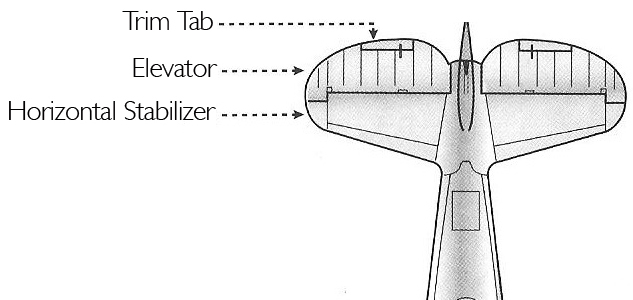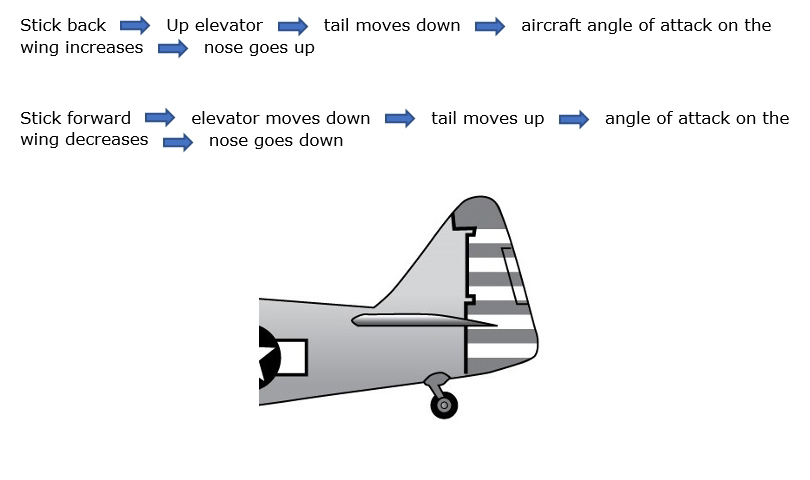A Matter of Pitch Control
No, Captain Billy is not playing baseball. In the previous article we discussed Weight and Balance and how it affects the flight of the aircraft. Now, let’s talk about Pitch.
Located on the tail of the aircraft, or Empennage, is the Horizontal Stabilizer. The stabilizer is what is called a “fixed control surface,” meaning it does not move. Attached to the stabilizer are the Elevators. The elevators on Tommy (and other T-6, SNJs and Harvards) are moveable up or down, and are controlled through a series of control rods connected to the two Control Sticks in the forward and aft cockpit.
The primary purpose of the elevators is to adjust the Pitch of the aircraft around the “pitch axis.” This axis is an imaginary line which is parallel to the wing from tip to tip. The pitch depends on where the Center of Gravity (CG) is located, how Tommy is loaded, and how many pilots are on board.
On Tommy, the horizontal stabilizer is metal-covered, and the elevators are fabric-covered. On both elevators, there is a small control surface called a Trim Tab.

While control of the pitch is the purpose of the elevators controlled through the control stick, the desired position of the stick in flight is with a neutral pressure on the stick. In other words, the pilot does not need to apply pressure, forward (fore) or back (aft), to keep the aircraft flying “In Trim.”
These small control surfaces exert a pressure in the opposite direction of the elevators. So, as you trim “Nose Up” to release back pressure, the tab moves down to move the elevator up. Just the opposite for “Nose Down” trim. Tab up, elevator down.
As the stick is moved fore and aft, the elevator creates a deflection, which shifts the air moving across the surface, and directs the tail in the opposite direction.

There are other aerodynamic forces in play, but Captain Billy has tried to keep it to the basics.
Blue Skys and Tailwinds,
Captain Billy
If you have any questions, email Captain Billy!
